This article is part of the Tools of the Trade series, sponsored by the Geek Girl Crafts Podcast. The author, Jade Falcon describes the basics of spinning .
You can listen to this podcast:
Spinning 101
For this Tools of the Trade episode, I’m going to talk at very high level about spinning. Some of you asked for this episode, so I’m obliging. In this Spinning 101, I’m going to discuss the tools used in spinning as well as the fiber. I’m going to try very hard not to get into too much detail, because then this podcast would be several hours long. My purpose it to primarily introduce you to the basics of spinning, and other Tools of the Trade will try to go into further details.
So, what is spinning? Spinning is the art of taking fiber and turning it into yarn, thread, or string.
Spinning has been in existence (at least documented) for about 20,000 years (more or less). You simply take fiber and add “twist” to the fiber to make yarn, thread, or string. The “twist” gives the fiber structure and strength.
The mechanism of spinning can be as easy as taking animal hair or plant fiber and rolling it down your thigh with your hand or rolling it between your palms. Adding twist with your hands or rolling it down your thigh is not very efficient. You can certainly do it, but it’s hard and laborious work.
So people started using mechanical devices to help yarn more effectively and efficiently. These simple devices were basically a stick and some sort of weight to help it rotate (like a rock or another piece of wood). Later, these became known as spindles. Spindles were used for hundreds of years to create yarn, thread, or string.
As time progressed, there were improved inventions, such as the spinning wheel to help increase the production of yarn.
So, lets talk about these mechanical devices right? Lets start off with spindles.
Spindles
Spindles are the first simple mechanical devices to actually spin yarn. You can find depictions of spindles from Ancient Egyptian tombs, on Grecian urns, and probably farther back in time.
A spindle is pretty easy to make. In general, a spindle comprised of two main things: a stick or shaft and (most of the time) a whorl.
The purpose of the whorl is to add weight to the stick, and allow the whole spindle to rotate at a constant rate, which then allows twist to be added into the fiber. The whorl can be round, like a wheel or “cross” shaped (like the Turkish spindle), or even spherical -- like a bead or stone. Whorls can be made out of nearly any material from a bead, clay, wood, glass,etc.
The shaft basically acts as the mechanism to help introduce “twist” to the fiber. It also serves as the way to “store” the yarn. You just wrap the finished yarn around the stick so you can continue to make more yarn from fiber.
Shaft and whorl of a top-whorl spindle
Spindles range in cost from a few dollars to the hundreds of dollars (depending on the materials).
You can create your own simple spindle using a pencil and an old CD!
http://joyofhandspinning.com/how-to-make-a-drop-spindle/
There are several types of spindles. In general, they can be broken into the following categories:
- Drop spindles -- Drop spindles to be suspended from the yarn you’re making after you
start to rotate the spindle. They are "dropped" from the yarn you are making. And sometimes, they even drop to the floor. Drop spindles are pretty portable and allow
you to move around. There are two types of drop spindles:
- top whorl spindle -- the whorl is at the top of the shaft. Some have a hook at the top to help secure the yarn
- bottom whorl spindle -- the whorl is at the bottom of the shaft. Many use a half-hitch to keep the yarn at the top of shaft.
- Supported spindles -- Supported spindles require a surface of some sort (either a bowl, small plate, or other flat surface) in order to spin.
Drop spindles
Drop spindles to be suspended from the yarn you’re making after you start to rotate the spindle. In Peru, you see spinners who walk around during their chores and spin. I’ve seen videos of them dancing. I’ve often done walks & hikes and spun at the same time with my drop spindle. It takes a bit of practice, but it’s totally doable!
Drop spindles can come in many different sizes and weights. However, in general, top whorl spindles tend to be lighter in weight, and can spin a little bit faster than bottom whorls. Bottom-whorl spindles are generally heavier, and can spin longer than top whorl spindles. Of course, you’ll find that everyone has an opinion on which is better. I like them both equally.
I also want to let you know about specific type of bottom whorl spindle called a “Turkish Spindle”, where the whorl is actually a “cross”, and you wind the yarn onto the cross of the spindle instead of on the shaft, but the mechanics of using the Turkish spindle is exactly the same.
Example of a Turkish spindle, which is a bottom whorl spindle
Supported Spindles
(Disclaimer: I don’t have a lot of experience with supported spindles, so I’m only going to discuss the general attributes of supported spindles. I can’t give an opinion on them.)
Supported spindles require a surface of some sort (either a bowl, small plate, or other flat surface) in order to spin. Unlike a drop spindle, your hand can provide additional support to a spindle. Consequently, there are some supported spindles where there is no whorl, only the shaft (like a French support spindle, which kinda looks like a French rolling pin)
Because the yarn doesn’t need to support the weight of this type of spindle, there are some different spinning techniques you can use to produce different types of yarn with different fibers
Much like drop spindles, supported spindles come in a variety of weights. The Navajo spindle is pretty heavy and requires that you sit on the floor or on a chair and use the floor. Some are pretty light, and can be spun on a table top.
Example of Navajo spindle spinning: https://www.youtube.com/watch?v=D_p7OIghMVw
IN GENERAL:
Spindles come in many types of material and weights. You can get them in wood, carbon fiber, glass, plexiglass, metals, etc. The type of material you want in a spindle is really personal. I have spindles where the whorl is made out of wood or glass. There are some absolutely beautiful and stunning spindles out there!
However, what matters most in a spindle is the weight. The weight of your spindle can be a factor in how thick of a yarn you can spin. It’s going to be very difficult to spin a laceweight yarn on a really heavy spindle and likewise -- a bulky yarn on a very light spindle. There are spindles that weight ½ oz (about 15 grams) up to 3oz (about 85 grams) and then beyond.
What’s the best spindle for a beginner? There’s debate on that -- some say medium weight, some say light, some say heavy. Personally, I don’t think there’s a right or wrong spindle to learn from! Get whatever spindle type that you find comfortable and go from there. I highly recommend Abby Franquemont’s book, “Respect the Spindle” to get a headstart on spindle spinning!
Here's a link to the physics of drop spindles: http://abigailscraftshowto.com/2010/03/spindle-physics-how-drop-spindles-work/
Wheels
Wheels are another mechanism for spinning yarn. It’s just a different tool...and no better or worse than a drop spindle. They are much more expensive than a drop spindle. New wheels often start at the hundred dollars (USD) mark and go up from there. For the cost-minded beginning spinner, a spindle is a much more cost effective way of getting into spinning.
There’s debate on which tool is better at producing more yarn --- wheel or spindle? I know spinners who spin sweater quantities of yarn on their spindles in a matter of weeks, just because they do it in between waiting periods -- much like knitters who knit while waiting at the doctor’s office. Spindles are pretty portable, whereas wheels generally are not. But honestly, both are equally good at producing yarn...it just depends on how often you spin.
So how do wheels work? Pretty much like a spindle -- you introduce twist into the fiber. The difference is how it is introduced.
SIMPLISTIC OVERVIEW of WHEELS
The following is very simplistic description of the different wheel types. It is not meant to be an exhaustive detailed summary.
Spinning wheels are basic machines consisting of a wheel, a whorl (ie. the pulley), and “drive band” which is the belt that goes around the wheel & pulley.
Example of a double drive band going around the wheel and whorls.
The rotation of the wheel & pulley cause another piece of the wheel to rotate -- called the FLYER. The flyer puts twist into the fiber as a spinner holds it, and then flyer pulls the resulting yarn onto a storage bobbin.
Example of the flyer and storage bobbin
For most spinning wheels, you use your feet on a treadle to turn the wheel. There are exceptions to this rule -- hand wheels and some electric spinning wheels.
The treadles of a wheel
Here are some of the parts of a spinning wheel. For more information, see the link below.
- Wheel – The wheel that rotates when treadling and causes the other various parts to operate.
- Drive Band – A cord that goes around the fly wheel and the flyer whorl.
- Flyer – A U-shaped piece of wood with hooks lined up on one or both arms. The hooks are used to store the yarn evenly on the bobbin. The flyer is rotated by the drive band which as a result puts the twist into the fiber.
- Whorl – A pulley attached to the flyer
- Bobbin – Rotates on the spindle along with the flyer and stores the yarn. It can operate with or independent of the drive band.
From the Joy of Handspinning.com
A spinning wheel nearly always has the parts I mentioned before, but they don’t always work in exactly the same way. Consequently, wheels can be categorized by HOW THEY WORK.
Treadle wheels are usually classified by:
- how the drive band works
- how tension is applied to the wheel so that yarn is pulled onto the bobbin. Tension can be applied via a brake band
- A single drive band loops around the whorl and the wheel.
- There is a separate brake band around the bobbin that allows you to regulate how fast yarn is wound onto the bobbin.
- The drive band & brake band work separately.
- Example: Ashford Kiwi
An Ashford Kiwi
Wheel Type 2: A bobbin lead Single Drive wheel (also known as Irish tension).
- In a bobbin-lead wheel, the whorl is attached to the bobbin instead of the flyer.
- The tension is applied at the FRONT of the flyer (usually by a leather strap). These are great to spin thicker yarn.
- Example: Louet S-10
- The drive band goes around the wheel twice and around the pulley and flyer; usually in a figure 8 configuration. This arrangement causes the flyer and bobbin to rotate at different speeds.
- Example Ashford Traditional
In addition to the above categorizations, wheels are classified by how they look or their “style”
- Saxony Wheel -- what most people think about when they consider a “Sleeping Beauty” wheel. (Ashford Traditional)
- Castle wheels -- the components of the wheel are stacked vertically above the wheel (Ashford Traveller)
- Norwegian Wheel - looks like a Saxonomy, but it has four legs and a long horizontal bench. (Kromski)
- Modern wheels - a hybrid of other traditional types, and tries to use modern technology to engineer a better wheel.
- Electric spinners -- some don’t have a treadle or wheel. Electronics and gears turn the flyer. Some electric spinners use a pedal (like a sewing machine) to control the rate of the spin.
- Hand wheels -- you turn the wheel with your hand instead of your feet. Examples include the Great Wheel or the Charkha wheel (popularized by Ghandi).
- Popular Wheel Mechanics (DVD by Judith MacKenzie
- For more information about the parts of a spinning wheel: http://www.craftsy.com/blog/2014/04/parts-of-a-spinning-wheel/
- How to Choose your first spinning wheel: http://abbysyarns.com/2008/12/choosing-your-first-spinning-wheel/
Fibers
There are all sorts of fibers that you can spin into yarn. For an excellent reference guide to fleeces and fiber, please read the book The Fleece & Fiber Sourcebook
Animal Fibers
- Sheep - Wool. ALL SORTS OF SHEEP. See big book of fleeces
- Camelids - Alpaca, llama, vicuna
- Rabbits, mink, possum
- Goats
- Bison, Yaks, Quivuit
- Silk
- Dog
- Flax / Linen
- Cotton
- Bamboo
- Nylon
- Acrylic
Each type of fiber can be spun multiple ways, although some fibers are often spun BEST in a particular way because of their staple length.
What is staple length? Staple length is the length of the given fiber.
There are long staple length fibers that can measure 3” or longer (like silk or flax), and short staple length fibers like merino or cashmere that measure in inches.
Woolen versus Worsted Spinning
Woolen and worsted spinning are simply different methods for how twist is introduced into fiber.
Some fibers are best spun in certain ways. For example, shorter staple fibers, like cashmere are best spun woolen because of how short the fibers are. Whereas a long staple length fiber, like silk, is best spun worsted.
However, these are guidelines. I’ve certainly spun silk woolen when mixed with other fibers. I won't go into too much detail, as it is an exhaustive topic, but for now, just be aware there are different methodologies for spinning fiber.
Summation
I hope that this quick & dirty Tools of the Trade is helpful in learning the very basics of spinning. Let us know what you think in the comments or other pieces you want more information.
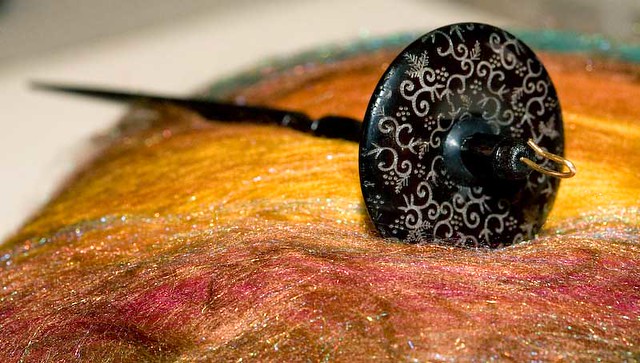
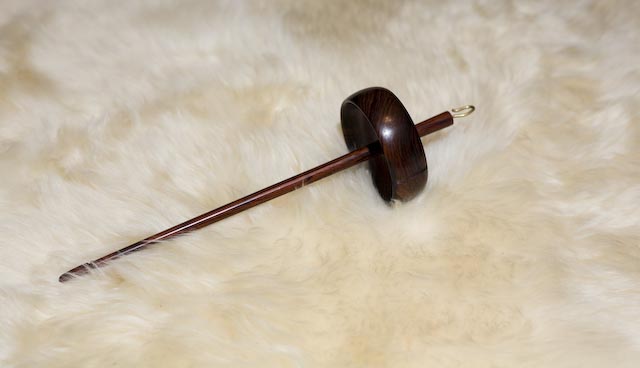
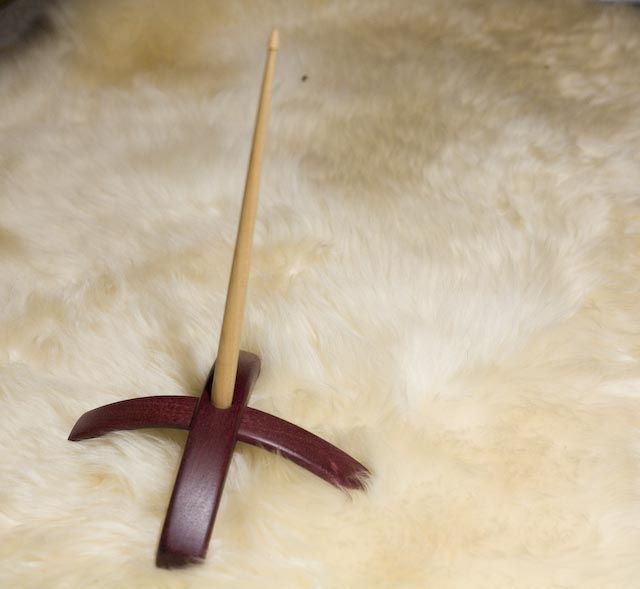


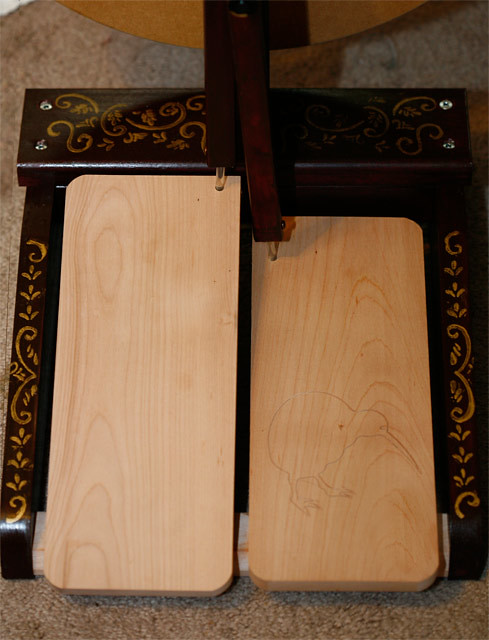
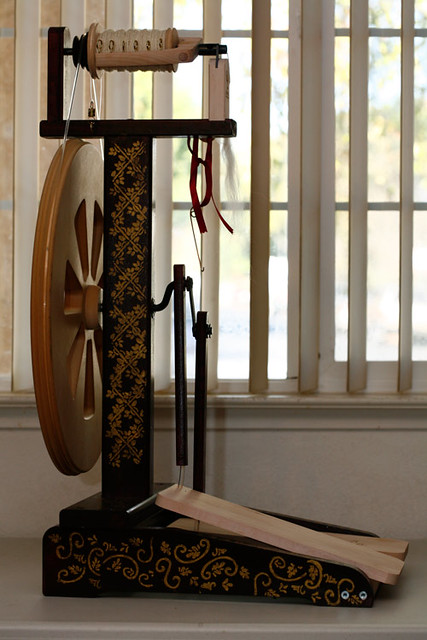
No comments:
Post a Comment